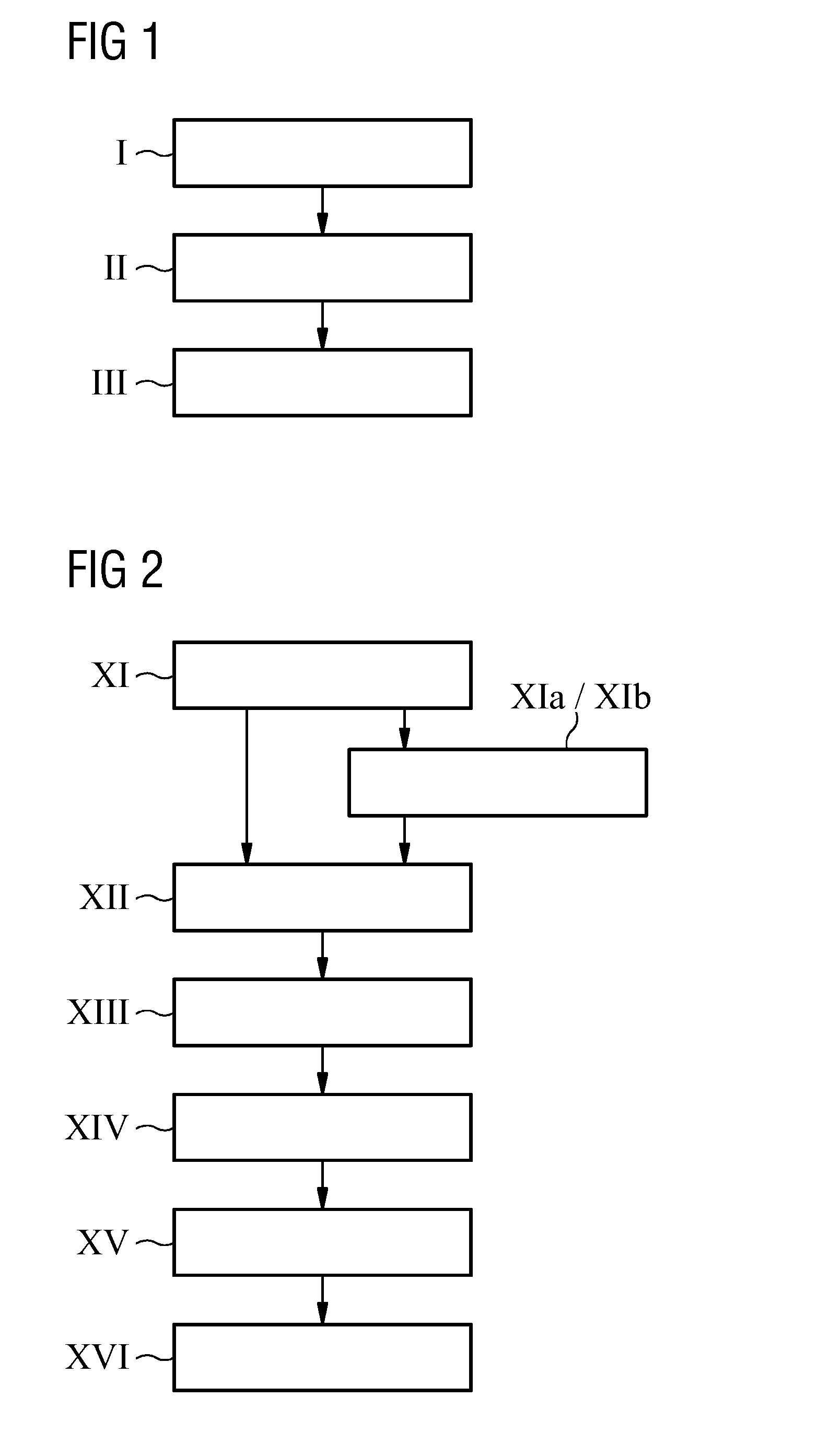Method of preparing a mould for vacuum resin transfer moulding
- Summary
- Abstract
- Description
- Claims
- Application Information
AI Technical Summary
Benefits of technology
Problems solved by technology
Method used
Image
Examples
Embodiment Construction
[0040]FIG. 1 shows a block diagram describing the steps used for preparing a mould according to the invention during the manufacturing process of a mould. The method of preparing a mould having a moulding cavity surface with vacuum flow topology for vacuum resin transfer moulding starts with step I in which a number of peel ply layers are pressed into an uncured resin layer of a mould just prepared. The peel ply layers are pressed into the uncured resin surface for building up the moulding cavity surface, more specifically for generating the specific pattern in the resin when cured.
[0041]In the next step, step II, the resin of the resin layer is cured so that the internal resin structure is hardened.
[0042]Thereafter, the peel ply layers are detached in step III to generate the vacuum flow topology in the moulding cavity surface. More specifically, the topology is a negative of the texture of the peel ply. The roughness of the structure highly depends on the used peel ply filaments a...
PUM
| Property | Measurement | Unit |
|---|---|---|
| Angle | aaaaa | aaaaa |
| Flow rate | aaaaa | aaaaa |
Abstract
Description
Claims
Application Information
 Login to View More
Login to View More - R&D
- Intellectual Property
- Life Sciences
- Materials
- Tech Scout
- Unparalleled Data Quality
- Higher Quality Content
- 60% Fewer Hallucinations
Browse by: Latest US Patents, China's latest patents, Technical Efficacy Thesaurus, Application Domain, Technology Topic, Popular Technical Reports.
© 2025 PatSnap. All rights reserved.Legal|Privacy policy|Modern Slavery Act Transparency Statement|Sitemap|About US| Contact US: help@patsnap.com

